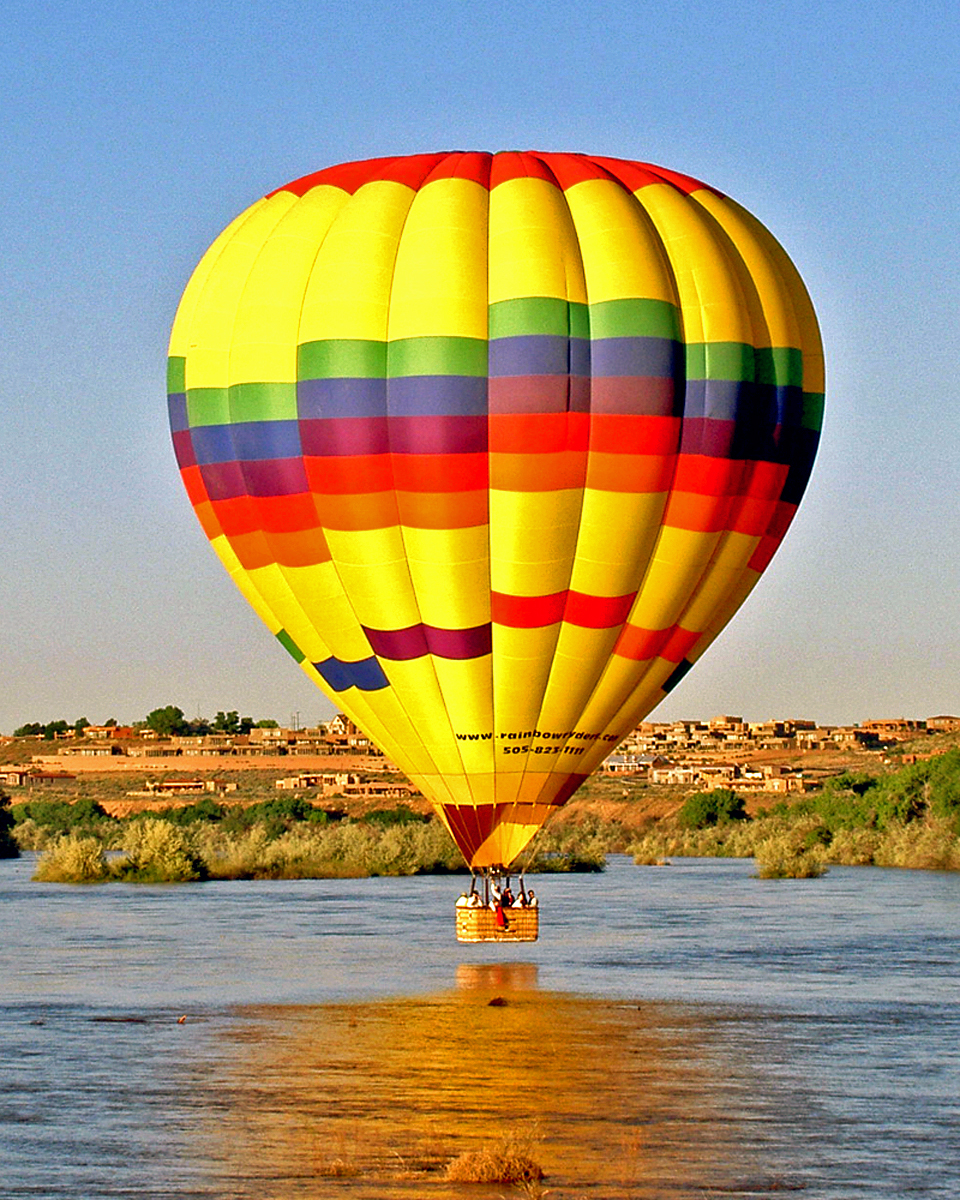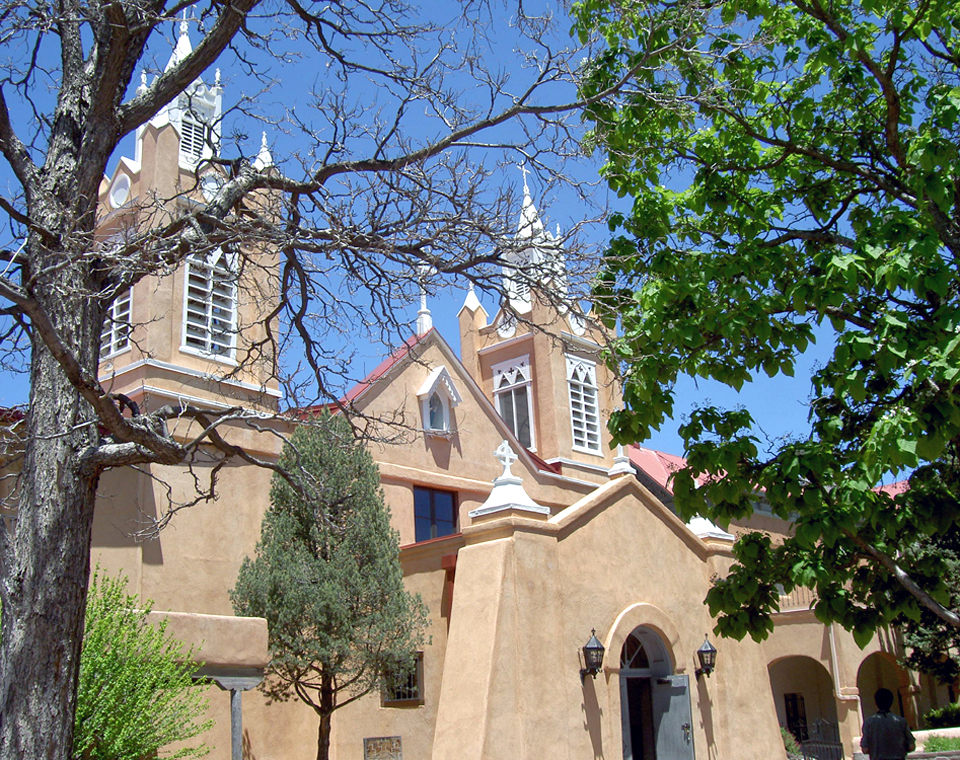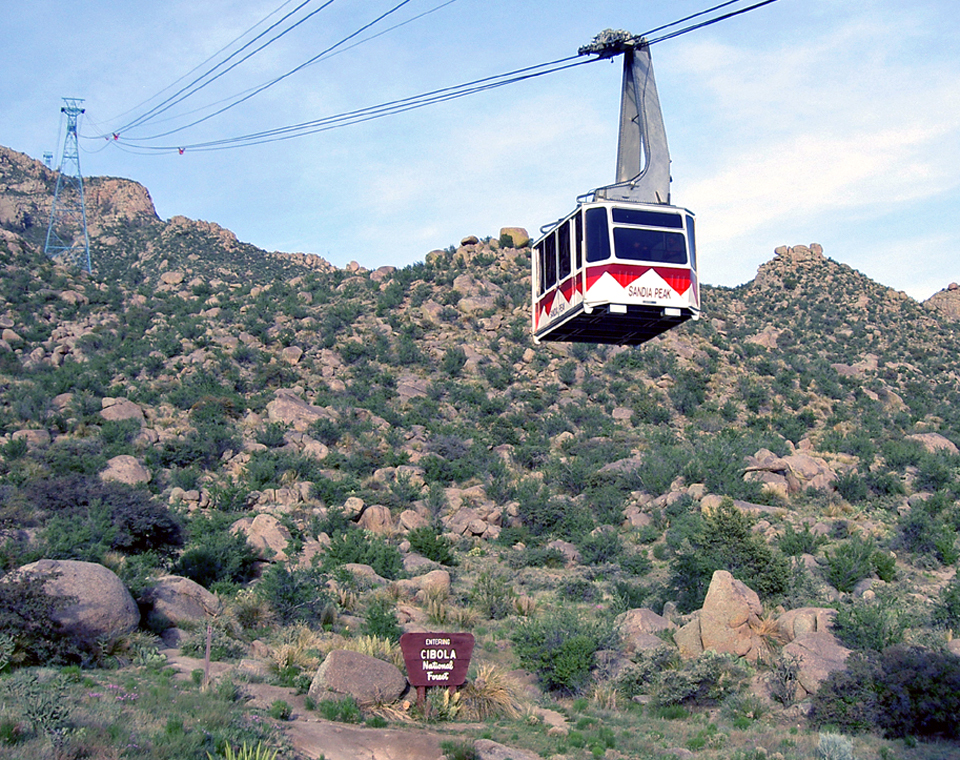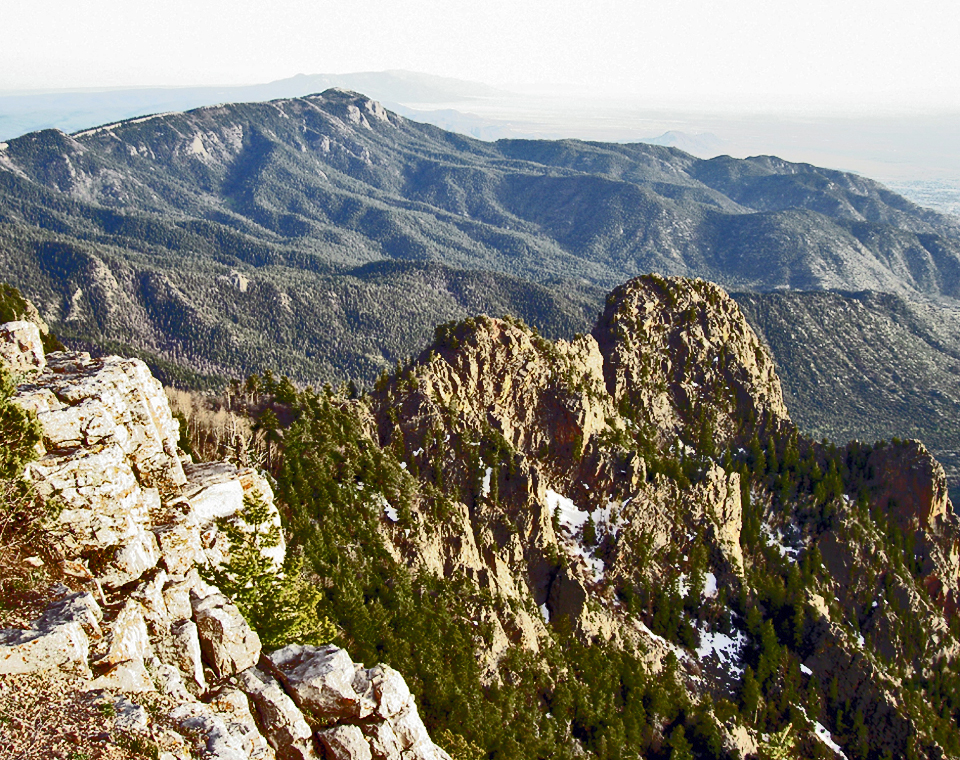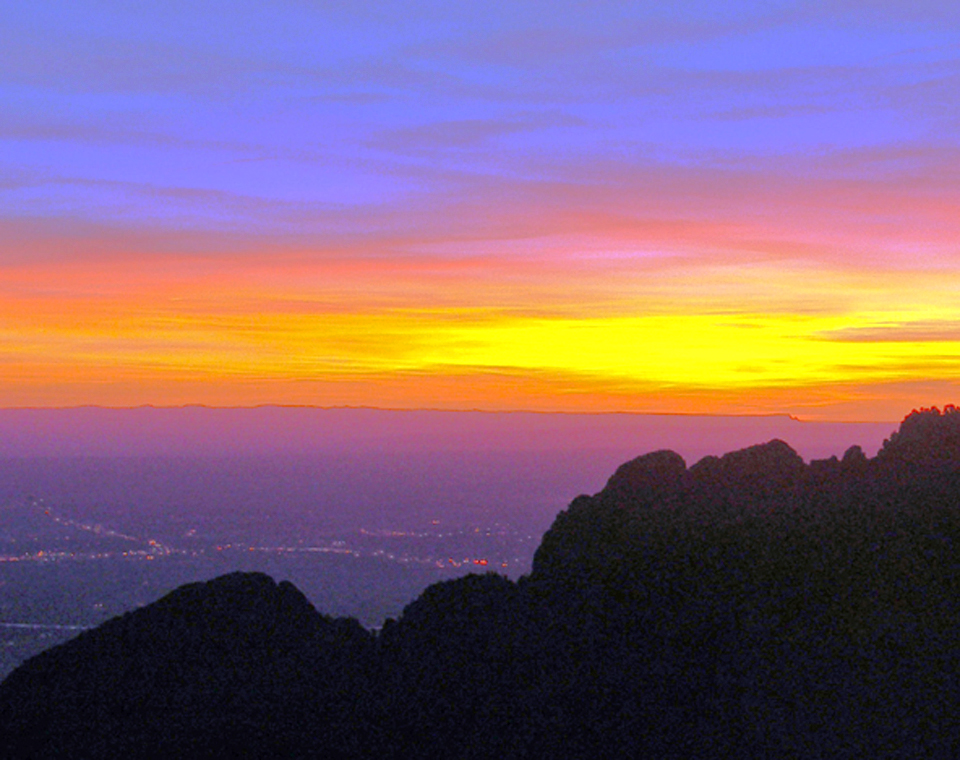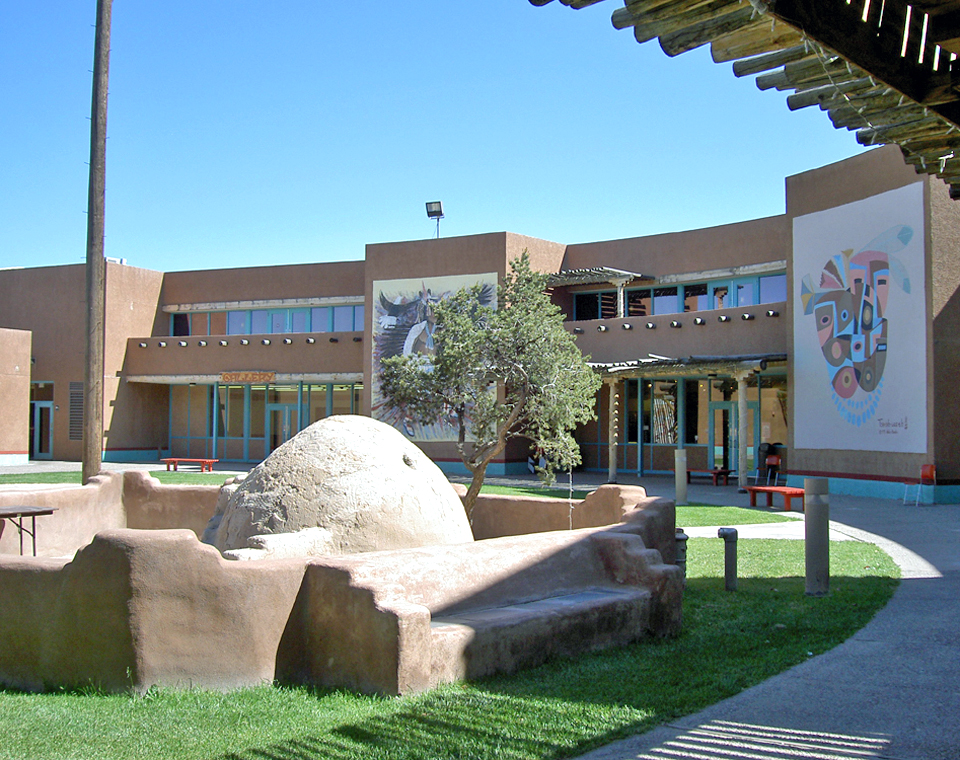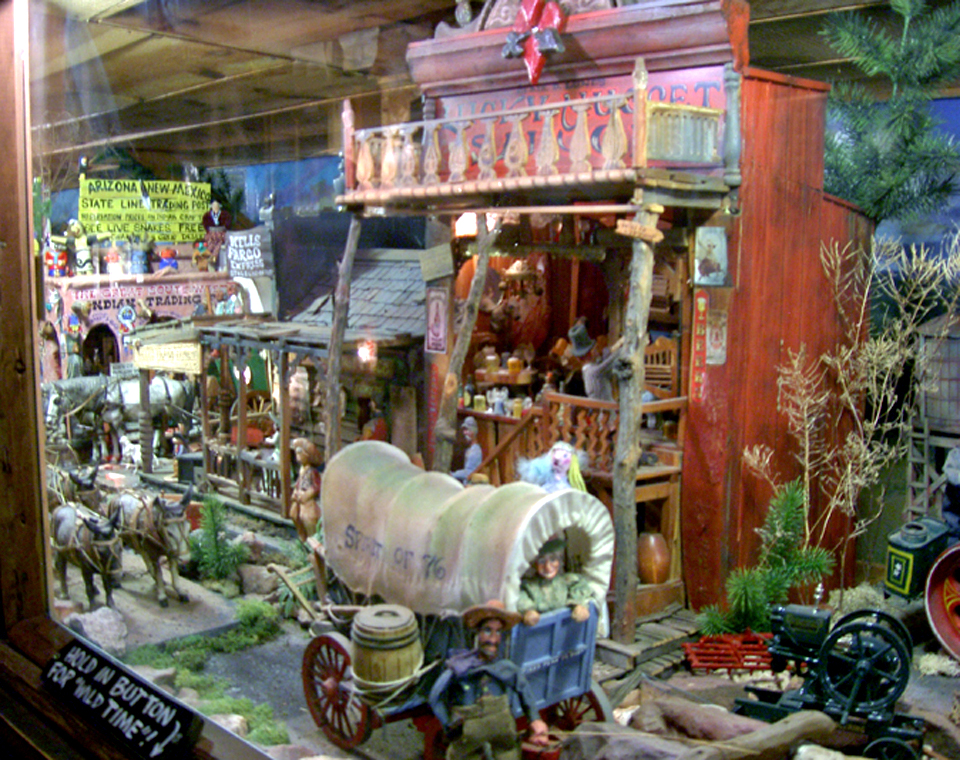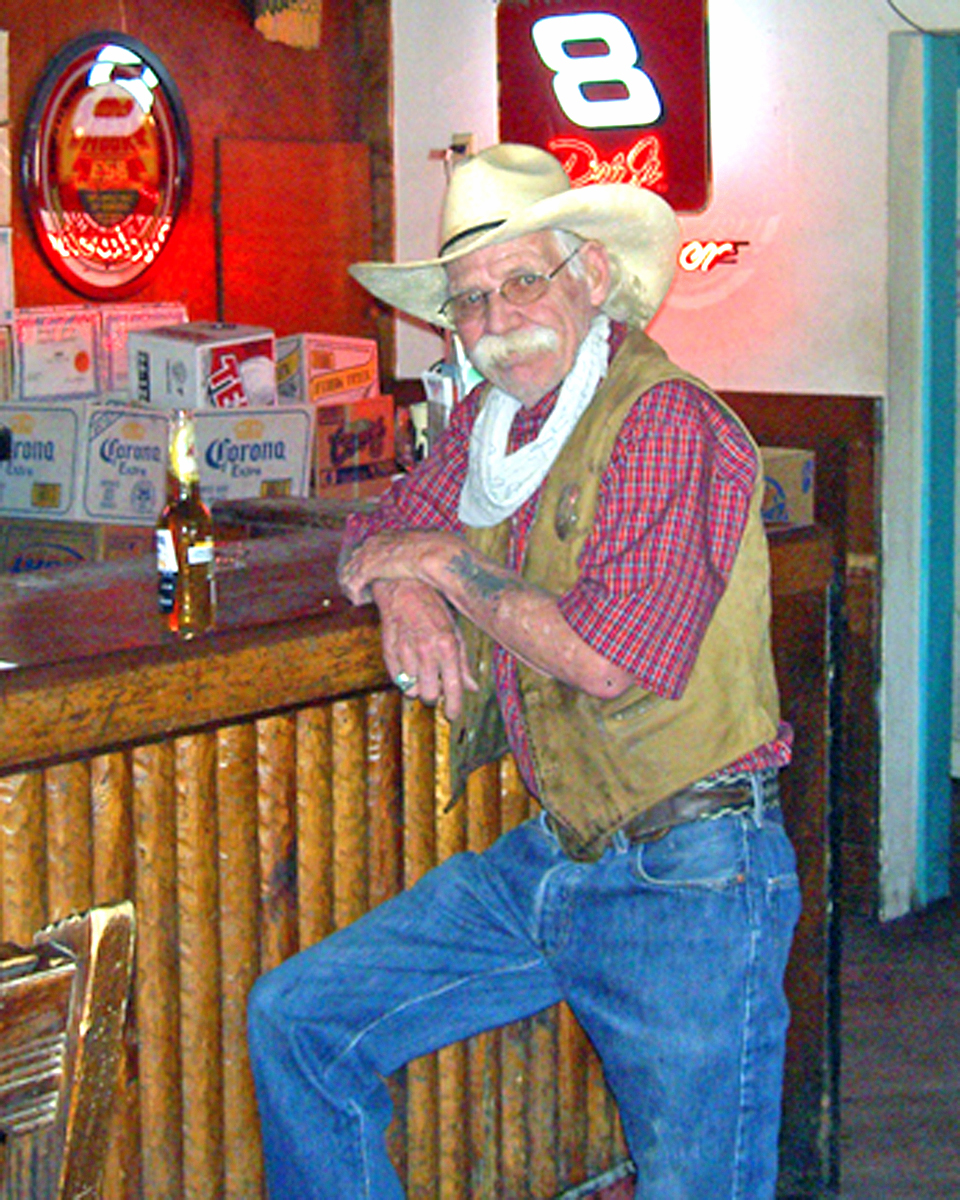High on Albuquerque, New Mexico
Colonists authorized by King Philip of Spain to form a city on the banks of the Rio Grande chose this fertile land with warm days and cool nights. First to be built was a small adobe chapel in the center of what is now known as Old Town. San Felipe de Neri Church, now much grander, remains an active parish church, continuing the traditional holiday and feast day celebrations.
Perhaps you’ll want to take a walking tour or hop on one of the free trolleys in the Old Town district. Visit in December and you’ll see the Old Town aglow with the Plaza Luminaria Tour. Stroll the long portals (porches) of the old flat-roofed adobe Pueblo-Spanish buildings, shop for turquoise jewelry, or relax on a shaded bench next to a door adorned with ristras, strings of dried chili peppers.
Christmas in July?
This is the only state with an official question, “Red or green?”. “Christmas style” is a combination of the two. New Mexicans are the top producers and consumers of chili peppers, and to sample some, we tried two restaurants highly recommended for authentic New Mexican food and ambience.
Casa de Ruiz Church Street Café, in the oldest residence in Albuquerque, serves outstanding Southwestern cuisine at reasonable prices. We strolled through delightfully restored rooms to the patio for the best breakfast burritos and huevos rancheros around.
For a festive atmosphere surrounded by cottonwood trees, stop at the El Pinto Restaurant, in the north valley. Reservations are recommended, for this is one of the most popular places in town for family celebrations, margaritas, or a night out. Our group shared appetizers and entrees– sampling tacos, tamales, burritos, carne adobada, stuffed sopapillas, tostadas compuestas, and the house specialty, chile con carne enchiladas — all from generations-old family recipes. You’ll want to bring home a jar of their popular salsa or chile.
Hit the heights
Denver is the Mile High City, but did you know that Albuquerque tops that, at an average elevation of 5314´, and offers two exciting ways to soar even higher?
The Sandia Peak Tramway, the world’s longest continuous cable aerial tramway, is an engineering marvel built in Lucerne, Switzerland, and one of the most popular tourist attractions of central New Mexico. On the eastern edge of Albuquerque, it ascends 2.7 miles from the desert floor over lush forests, rocky spires, and deep wooded canyons through four climate zones for a bird’s eye view of Cibola National Forest.
If you are lucky, you may see some wildlife along the rocky slopes—mule deer, black bear, or perhaps a bobcat, mountain lion, or cougar. Eagles, hawks, or vultures may swoop by. Cibola means watermelon, and granite on the western side of the mountain glows pink at dusk.
Four Seasons Visitor Center is at the summit, staffed by Forest Service Rangers and volunteers. There are also trails for hiking or mountain biking, and skiing in winter.
Sunset is the time for dinner reservations at High Finance Restaurant and Tavern, THE place for steaks and seafood. The two mile high views are spectacular at any time—distant mountains, the Rio Grande valley, extinct volcanoes, and desert. As the sun goes down, city lights sparkle against the vibrant colors of the sky.
The precision flying of the “Albuquerque Box”, with a unique change in wind direction at different altitudes, makes this the Hot Air Ballooning Capital of the World. No wonder there are over 300 resident balloonists, more than in any other state.
At the crack of dawn, go up, up and away in a beautiful balloon. Float on air for breathtaking views of the Sandia Mountains and the city coming to life, and gently drop down for a moment to touch the Rio Grande. Rainbow Ryders offers special balloon rides during Balloon Fiesta.
Albuquerque International Balloon Fiesta, the largest ballooning event in the world, attracts hundreds of thousands of people and is one of most photographed events anywhere. Over 700 balloons are included in the mass ascension at sunrise. There are competitions, special shapes events, and international displays, all topped off by evening illumination and firework displays.
The Anderson-Abruzzo Albuquerque International Balloon Museum, named for the Albuquerque balloonists who first successfully crossed the Atlantic, overlooks the launch field at Balloon Fiesta Park. To enter is to feel as though you are going into a balloon about to be inflated. With one of finest collections of ballooning equipment and memorabilia in the world, it showcases the science, art, and history of the sport. The glass north façade frames spectacular views of the Sandia Mountains and balloons events.
And there’s more…
Historic Rte 66, “America’s Main Street” is being revitalized. It passes the University of New Mexico, the unique Pueblo-Deco style KiMO Theater, and Nob Hill with its distinctive architecture, restaurants, and shops. New Mexico has longest intact stretch of 1950s roadside architecture and nostalgia, including many original neon signs.
To the west is Petroglyph National Monument, the world’s largest accessible collection of these mysterious shapes. Carved by Indians with stone tools into the rocks of extinct volcanoes, these drawing indicate a cultural network yet to be understood.
Several wineries dot the landscape. Vineyards were first established for Franciscan monks who needed wine for daily mass.
As in other great cities, you’ll find art and historical museums, a botanical garden, aquarium, zoo—and more. You can return home from Albuquerque’s American International Rattlesnake Museum with a photo of an experience you won’t soon forget. New Mexico is dinosaur country and the New Mexico Museum of Natural History and Science reveals colossal discoveries from the area.
The Turquoise Museum, across from Old Town, has the largest private collection of this semiprecious stone. Joe Dan Lowry, whose family has mined and cut turquoise for five generations, gives colorful talks on its origins and value, folklore, and will tell you how to determine quality.
The Manhattan Project in nearby Los Alamos developed and tested the atomic bomb. The National Museum of Nuclear Science and History has the world’s largest collection of nuclear weapons and depicts the development and application of nuclear technology for both peaceful and wartime uses. This colorful arena for a better understanding the Atomic Age will move to Balloon Fiesta Park, where it will be expanded and renamed the National Museum of Nuclear Science & History.
A mosaic of cultures.
At the Indian Pueblo Cultural Center, owned and operated by New Mexico’s 19 Pueblos, the history, art, and spiritualism of a living culture is traced from the Pueblo perspective back to pre-Columbian times in a building patterned after a traditional pueblo (village). Paintings, weaving, pottery, jewelry, clothing, and photos are on display. Arts and crafts demonstrations and traditional Indian dances are held weekends, free, and open to the public. Native American foods are served in the restaurant and there is a gift shop.
Roy E. Disney Center for the Performing Arts recently opened at the 52 acre National Hispanic Cultural Center & Foundation. It is the only national cultural institution dedicated to studying, advancing, and presenting Hispanic arts and culture.
Do you know the way to Santa Fe?
Drive the historic NM14, the Turquoise Trail, a national Scenic Byway. You’ll enjoy the colorful little towns and attractions along the way.
Tinkertown Museum on Sandia Crest Road is Ross Ward’s eclectic collection of folk art, memorabilia, animated villages, circuses, and Wild West scenes, and much, much more. This site with rambling glass bottle walls, all built around his house, must be experienced to be appreciated.
Stop for a photo of the 1830s adobe San Francisco Catholic Church in Golden. It is the site of the first gold rush west of the Mississippi.
One of only two mines in world with both hard and soft coal was found at the once-booming company town of Madrid. Demand for coal declined, and Madrid became a ghost town until artists and craftspeople arrived in the ‘70’s and transformed miner’s shacks into shops and galleries. Stop at the Old Coal Mine Museum, and then try a buffalo burger at the Mine Shaft Tavern, “One of the Last of the Great Roadhouses”.
You can belly up to the longest standup bar in New Mexico and see Ross Ward’s historical paintings on the wall. There’s live entertainment on weekends. It’s said that Walt Disney came to this area for inspiration for Thunder Mountain.
At the ghost town of Cerillos, you’ll find buildings from earlier days of turquoise and precious metals mining. Once the site of twenty-one saloons and four hotels, its picturesque Old West dirt streets, adobe homes, and cottonwood trees have been the setting for several movies, including Lonesome Dove.
Albuquerque is a destination for all seasons, and a visit will quickly reveal why they say “Albuquerque, it’s trip!”

